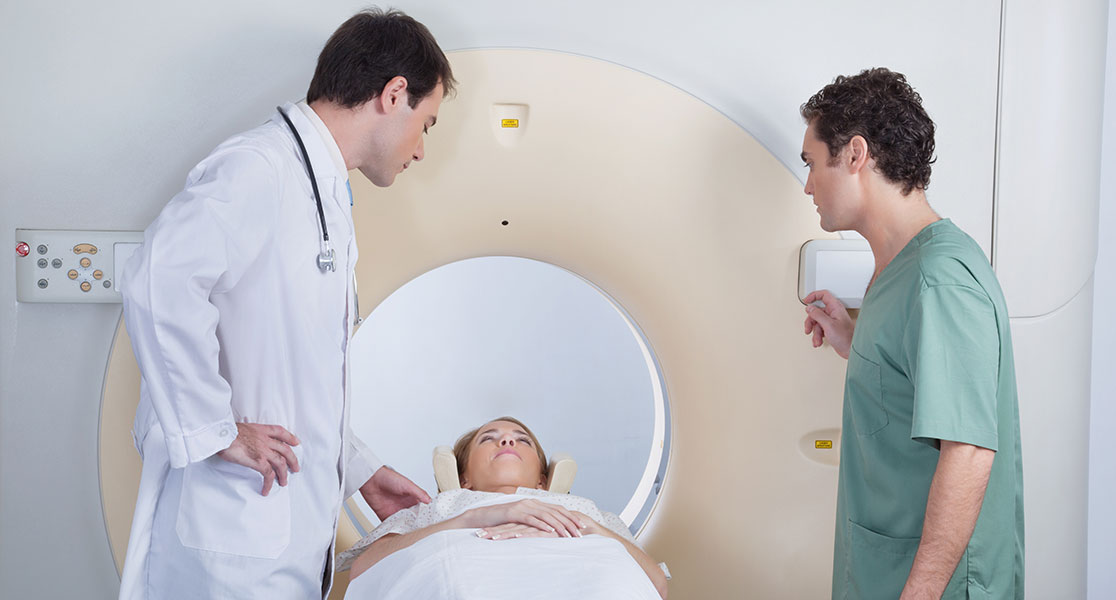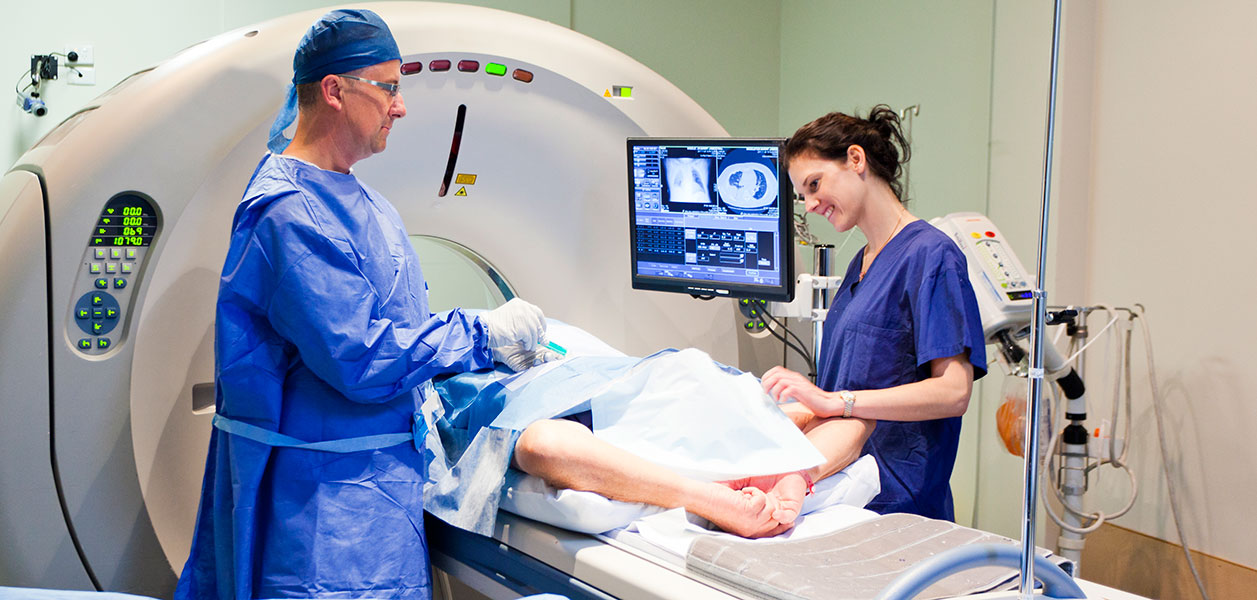A CT, or computed tomography, scan combines many layers of X-ray images to produce cross-sectional and detailed images of a specific area of the body. The X-ray images are processed by computer to produce detailed images of soft tissue, bones and blood vessels. On a conventional X-ray, many of the details revealed in a CT scan would be indistinct or shadowed. CT scans can be used to distinguish between normal and diseased tissue and measure changes in shape, appearance and size. These scans are used in the diagnosis and examination of a wide variety of medical concerns, including trauma, cancer, inflammation, infectious disease and cardiovascular disease.
CT scans can help in the development of an early diagnosis of significant medical issues and is one of the most powerful and important imaging technologies commonly used today.
FAQ: CT Scan
What are the differences between different scans, like MRI and CT?
CT, computed tomography, uses X-ray radiation and a computer to create cross-sectional images. On the other hand, MRI, magnetic resonance imaging, does not involve radiation. Instead, MRI uses a powerful magnet and radio waves to transmit images of the body for computer processing. A CT scan is a shorter process than an MRI. When receiving a CT scan, you may need to drink an oral contrast solution; when receiving an MRI or a CT scan, you may receive a contrast agent injected intravenously. The MRI machine is noisier during the actual scanning process.
How long does a CT scan take?
Depending on the area of the body being scanned, a CT scan can take from 5 to 15 minutes. You may need to prepare for your exam by taking an oral drinkable contrast solution 30 to 90 minutes before the exam.
Why does the CT scan technologist leave the room?
When you receive a CT scan, the machine is controlled remotely by a console operated by the technologist. During the exam, the operator can see you and communicate you through the window between the scanning room and the console.
Will the CT scan be painful?
During the scan, you will need to lie still and follow instructions to regulate your breathing at specific moments. None of these things should cause you pain. If you need to receive intravenous contrast solution, this will be done by inserting a catheter in your arm, which is a similar feeling to a blood draw; it is uncomfortable but should not cause serious pain.
Will I be sedated?
Most patients can tolerate a CT scan without sedation. The CT scanner is more open than an MRI and scans are not long in duration. The head is usually under the scanner for only a very short period of time.
How much radiation is involved in a CT scan?
Radiation exposure in a CT scan varies, depending on the area of the body to be scanned and the size of the patient. We work to use the lowest amount of radiation possible and use the most advanced technologies in order to reduce radiation exposure. In addition, we use special techniques for children in order to lower the dose of radiation received by pediatric patients.
What is a contrast agent and why do I need it?
Depending on your symptoms, medical history, and the area of the body to be scanned, you may receive an oral drinkable contrast agent or an intravenous contrast solution to improve the quality of your CT scan results. Barium and iodinated contrast material, either used intravenously or mixed with water or juice and delivered orally, provide a better view of the organs in your body. When receiving intravenous contrast, you may feel a hot sensation, which is common and expected. If you have had bad experiences with iodine or X-ray dye in the past, you must inform your doctor and our staff so we can prepare properly for your scan.



